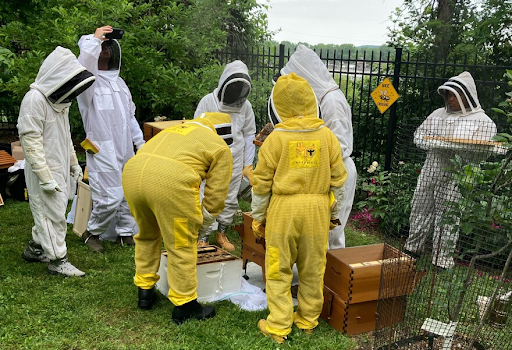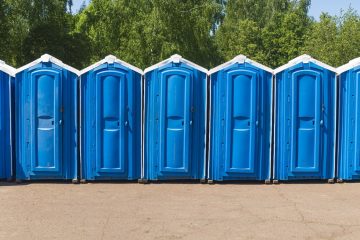Beekeeping has a reputation as a peaceful, rewarding hobby, often portrayed as a harmonious partnership between humans and bees. While it’s true that beekeeping is a fascinating and productive practice, one aspect of the activity cannot be overlooked—safety. Beekeepers need to protect themselves when working with bees, and this is where the beehive suit comes in. The importance of wearing a beehive suit is paramount, especially considering the unpredictable nature of bees and the potential risks involved. In this comprehensive article, we’ll dive deep into why every beekeeper needs a beehive suit, and how prioritizing safety enhances the overall experience of beekeeping.
The Basics: What is a Beehive Suit?
A beehive suit, also known as a bee suit, is a full-body protective garment designed to shield beekeepers from bee stings while they manage their hives. These suits typically cover the entire body and include a hat with a veil for facial protection, gloves for hand safety, and boots or leggings for additional coverage. Beehive suits come in various materials and designs, ranging from heavy-duty fabrics to more breathable, ventilated versions, ensuring beekeepers remain comfortable and protected while working with their buzzing colonies.
The Importance of Protection
Bee Stings are Inevitable
Even the most experienced beekeepers will tell you: bee stings happen. Bees are not aggressive creatures by nature, but they can become defensive when they feel their hive is being threatened. Managing a beehive often involves opening it up, moving frames, and occasionally disrupting the bees’ environment. These actions can provoke defensive behavior from the bees, leading them to sting.
While one or two stings may not seem like a big deal, an angry swarm of bees can result in multiple stings within a matter of seconds. Bee stings, while generally harmless to most people, can be painful and, in large numbers, dangerous. A beehive suit acts as a necessary line of defense between you and the potential stings, allowing you to work confidently without the constant worry of being attacked by the bees you’re caring for.
Allergic Reactions Can Be Life-Threatening
One of the most serious risks associated with bee stings is the potential for an allergic reaction. Even if you’ve been stung by a bee before without issue, allergies can develop over time, and some people may not even realize they are allergic until they have a severe reaction. A condition called anaphylaxis can occur after a bee sting, causing symptoms like swelling, difficulty breathing, and even loss of consciousness. Without immediate medical intervention, anaphylaxis can be fatal.
For those who are allergic to bee stings, even one sting can be incredibly dangerous. A beehive suit offers protection that can help reduce the likelihood of being stung, thus minimizing the risk of an allergic reaction. If you are a beekeeper with a known allergy, wearing a suit should be considered non-negotiable, and even for those without allergies, the unpredictable nature of allergic reactions makes it a vital precaution.
FOR MORE INFORMATION CLICK HERE : eid gift pictures
Avoiding Psychological Fear
The fear of getting stung is real and can be a psychological barrier for many people considering beekeeping. This fear, if not managed, can lead to mistakes or rushed movements, which in turn might agitate the bees and increase the chances of getting stung. A beehive suit serves as a mental buffer—when beekeepers are properly suited up, they feel more secure and less anxious about interacting with the bees.
This psychological comfort allows beekeepers to remain calm, move gently, and think clearly when performing hive inspections or harvesting honey. The confidence that comes with wearing a protective suit cannot be overstated. It enables beekeepers to enjoy their work without the constant dread of potential stings.
FOR MORE INFORMATION CLICK HERE : fujairah staycation
Components of a Beehive Suit: A Breakdown
Not all beehive suits are created equal, but most suits come with essential components designed to keep beekeepers safe and comfortable. Let’s take a closer look at each part of a typical beehive suit:
The Veil
The veil is one of the most critical parts of the beehive suit, as it protects your face and neck from bee stings. These areas are particularly sensitive, and a sting to the face can be not only painful but also dangerous. The veil is usually made from mesh material that allows for clear visibility while preventing bees from getting close to your skin. Some veils are attached to a hat, while others zip onto the suit, forming a protective bubble around your head.
The Suit
The main body of the suit covers your torso, arms, and legs, providing full protection. Beehive suits are typically made from thick, durable fabric such as cotton or polyester to keep bee stingers from penetrating the material. However, many modern suits also incorporate ventilation panels to allow airflow, preventing beekeepers from overheating during long hours spent in the sun or while working in warmer climates.
Gloves
Your hands are in close proximity to the bees when managing a hive, making gloves a crucial part of your beekeeping attire. Beehive gloves are usually made from leather or other tough materials that prevent bee stings while still allowing flexibility for handling delicate tasks. Some gloves are longer, extending up the arm to overlap with the suit, ensuring no gaps are left for bees to enter.
Boots
Beekeepers often wear boots or special leggings to protect their legs and feet. These areas are vulnerable when working around the base of the hive or when bees fly toward the ground. High boots are recommended, as they can be tucked into the pants of the suit to prevent bees from crawling up the legs. Some beekeepers also use elastic ankle straps to ensure a tight seal between the suit and boots.
Why Every Beekeeper Should Wear a Beehive Suit
It’s Not Just About the Bees
While the primary purpose of a beehive suit is to protect against bee stings, the suit also shields you from other potential dangers in the apiary. Beekeepers often work outdoors in varying weather conditions, including high heat, humidity, and exposure to the sun. A well-designed beehive suit not only prevents stings but also offers sun protection, keeping beekeepers cool with ventilated fabrics or providing warmth in cooler temperatures.
Additionally, some suits are designed to keep out other insects or pests that might be present in the environment, such as ticks, wasps, or mosquitoes. Wearing a beehive suit, therefore, provides a layer of protection against multiple threats.
Safety Equals Efficiency
When beekeepers feel safe and protected, they can focus on their tasks without distraction. Whether it’s inspecting frames, harvesting honey, or treating a hive for pests, a beehive suit allows for efficient work without the constant interruption of swatting away bees or dealing with stings. A beekeeper who is well-equipped and confident can work faster, reducing the time spent agitating the bees and ultimately lowering the risk of an aggressive response.
Peace of Mind for New Beekeepers
For beginners, stepping into the world of beekeeping can feel intimidating. The idea of working with thousands of stinging insects is daunting, and many new beekeepers worry about making mistakes or being stung. A beehive suit provides peace of mind for newcomers, allowing them to focus on learning the craft without fear of injury. Knowing they are protected, new beekeepers can practice proper techniques, observe their bees calmly, and build confidence over time.
Consistency in Care
Beekeeping is a year-round responsibility, with different tasks required in each season to ensure the health and productivity of the hive. Regular hive inspections are crucial to identify problems early, such as signs of disease, pests, or queen issues. Without a beehive suit, some beekeepers may avoid these inspections out of fear of being stung, which can lead to neglect and poor hive management.
By wearing a beehive suit, beekeepers can stick to a consistent schedule of care, ensuring their colonies remain healthy and thriving. The suit encourages proactive beekeeping, leading to better outcomes for both the bees and the beekeeper.
Choosing the Right Beehive Suit
Now that we’ve established the importance of wearing a beehive suit, it’s essential to know what to look for when purchasing one. With so many options available on the market, selecting the right suit can feel overwhelming. Here are a few key considerations:
Material
The material of your beehive suit plays a significant role in both comfort and protection. Traditional suits are made from thick cotton, which offers excellent protection from stings but can be hot and heavy. Modern beekeepers often prefer lightweight, ventilated fabrics that allow airflow while still providing adequate protection. Suits made from synthetic materials like polyester or nylon are also popular for their durability and breathability.
Fit
A beehive suit should be loose-fitting, as a tight suit may allow bees to sting through the fabric. However, it shouldn’t be so loose that it becomes cumbersome or gets caught on hive components. Look for suits with elastic cuffs at the wrists and ankles to prevent bees from entering, and ensure the suit has a secure fit around the neck where the veil attaches.
Ventilation
For beekeepers working in warm climates or during the hot summer months, ventilation is a crucial feature. Some beehive suits are designed with mesh panels or other breathable materials to keep the wearer cool and comfortable, reducing the risk of overheating while working around the hive.
Veil Design
When choosing a veil, consider the type of visibility it offers. Some veils are more prone to fogging or obstructing your view, making it difficult to see what you’re doing inside the hive. Look for veils made from fine mesh that provides good visibility and is easy to clean. Additionally, check how the veil attaches to the suit, ensuring a secure, bee-proof seal.
Durability
Beekeeping can be tough on clothing, so investing in a durable suit is essential. Check for reinforced stitching at key stress points, such as the knees, elbows, and zippers. A high-quality beehive suit will last for many seasons, providing reliable protection year after year.
Conclusion: Safety First, Always
Beekeeping is an incredible and fulfilling practice that fosters a deep connection with nature and contributes to the environment by supporting pollinators. However, the risks involved in working with bees cannot be ignored, and wearing a beehive suit is a simple yet effective way to prioritize safety. Whether you’re a seasoned beekeeper or just starting, suiting up properly ensures you can tend to your hives confidently, without fear of stings or accidents.
At the end of the day, every beekeeper should adopt a “safety first” mindset. The beehive suit is more than just protective gear—it’s a tool that empowers beekeepers to perform their tasks calmly and efficiently, protecting not only their physical well-being but also their peace of mind. So the next time you step into your apiary, zip up, put on your veil, and remember: a beehive suit is your best defense in the world of beekeeping.




